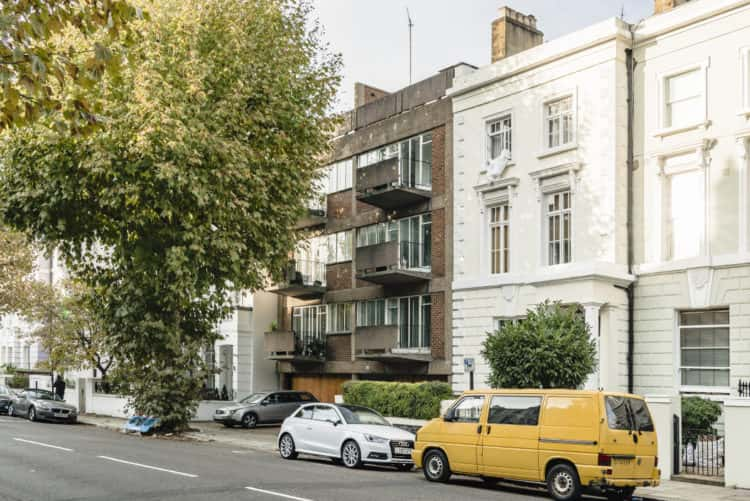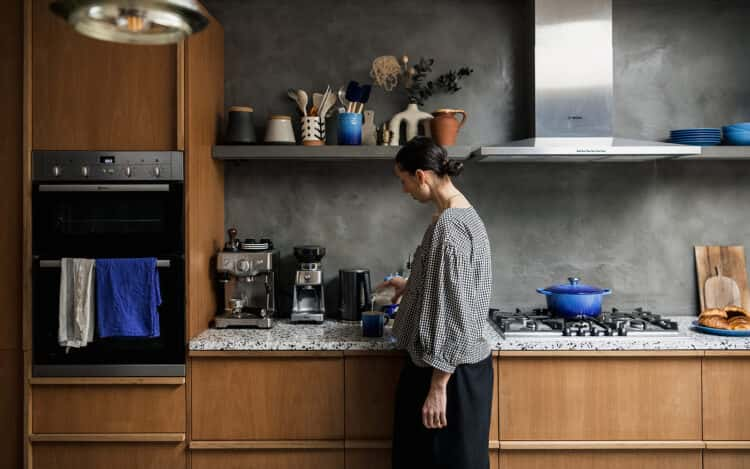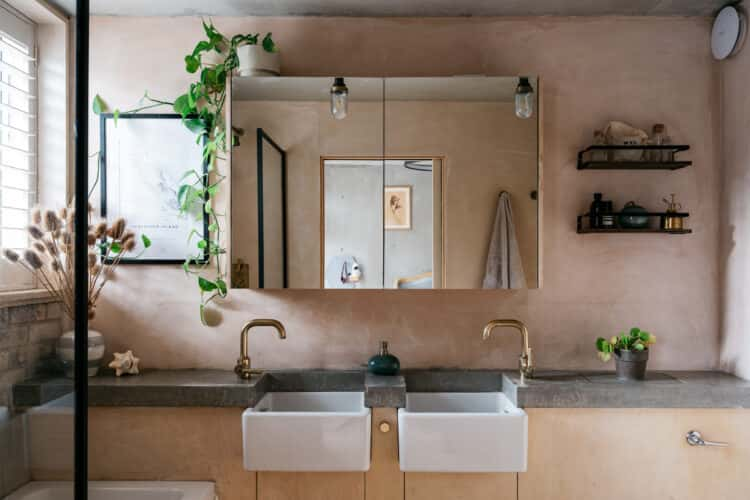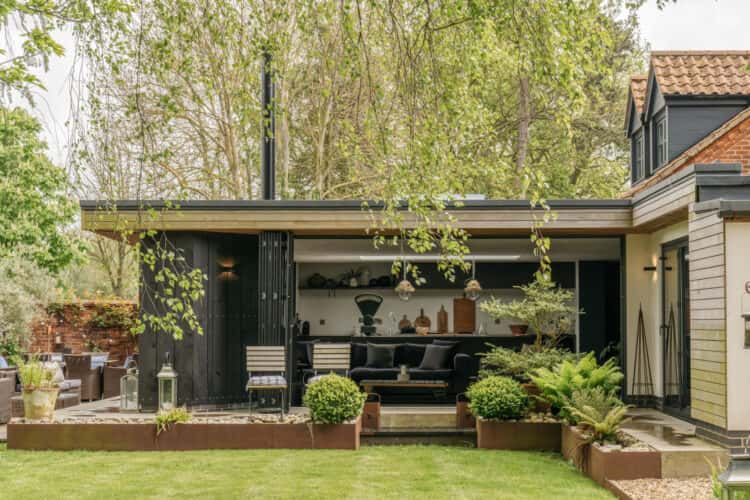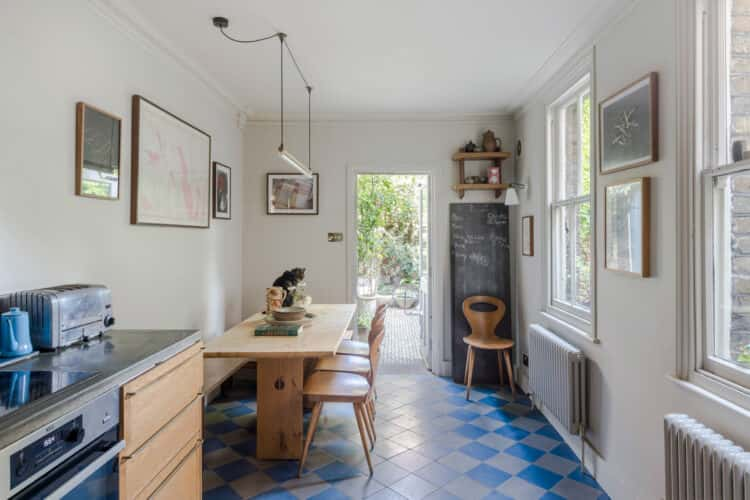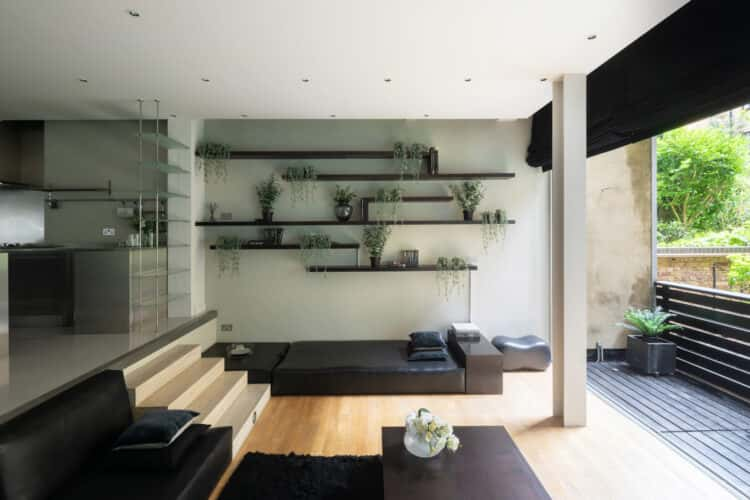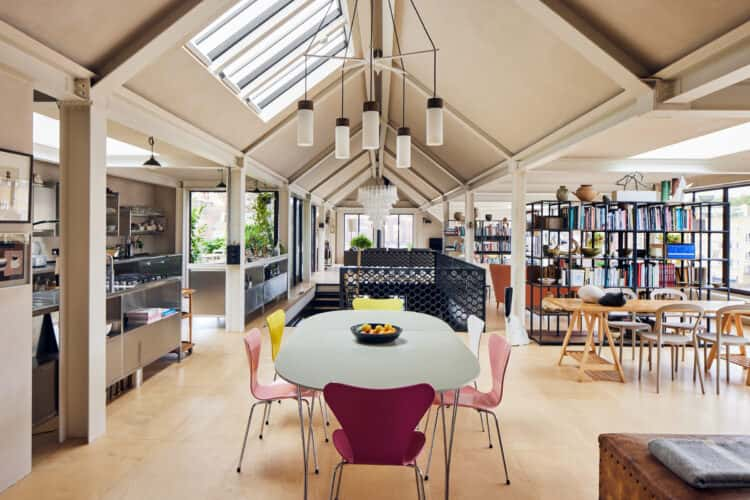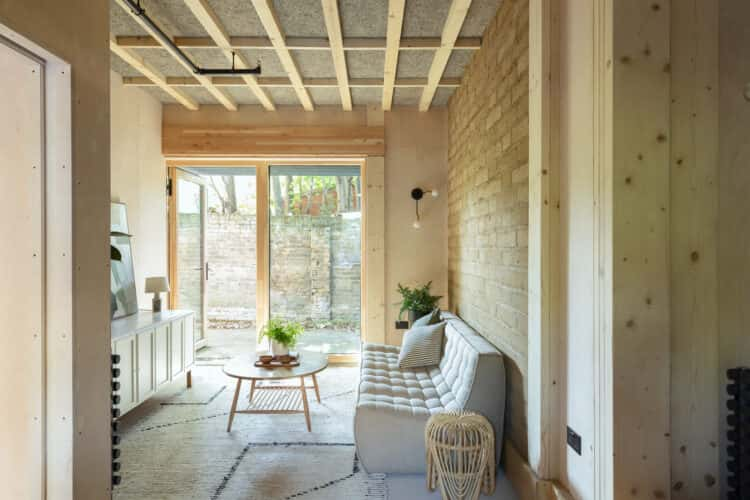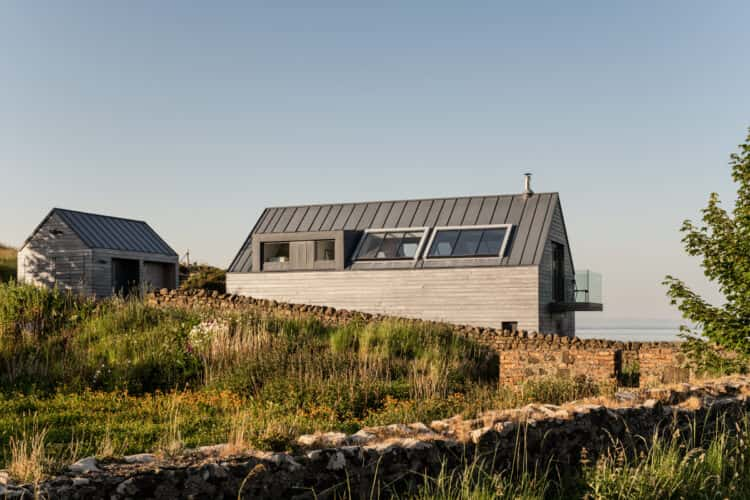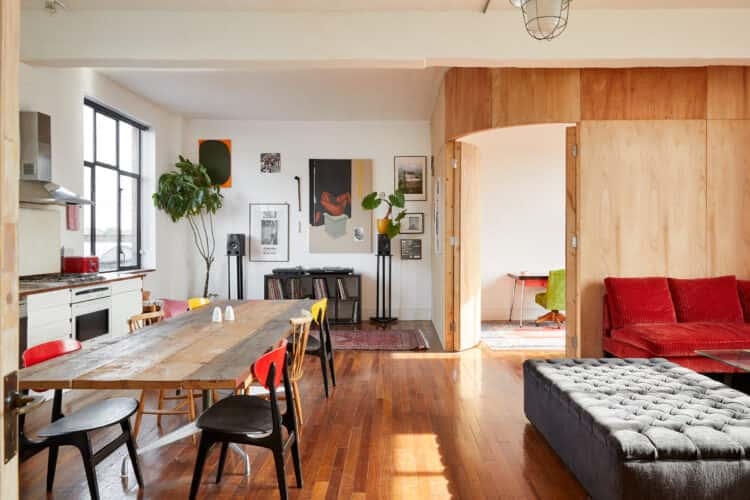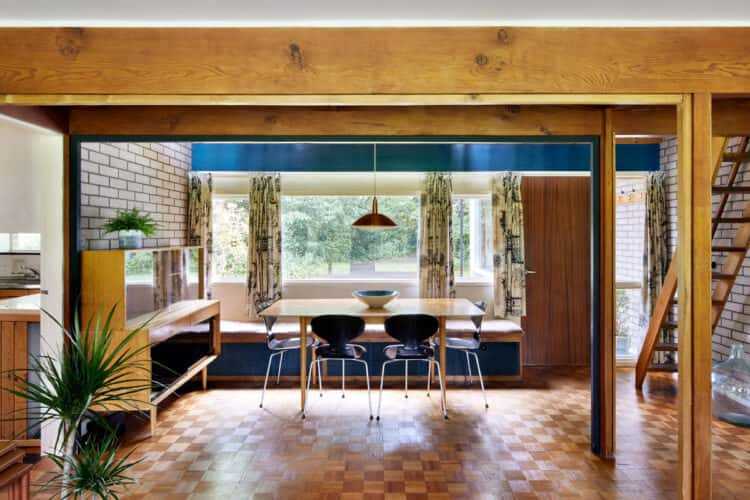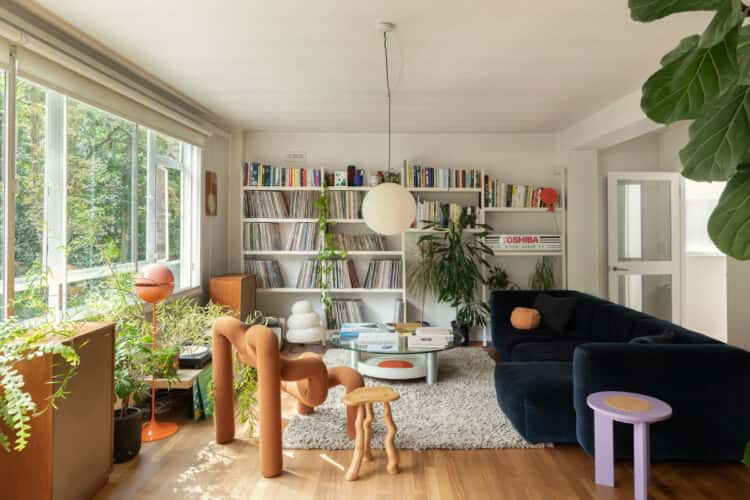The power of post-war design in Regent’s Park, north-west London
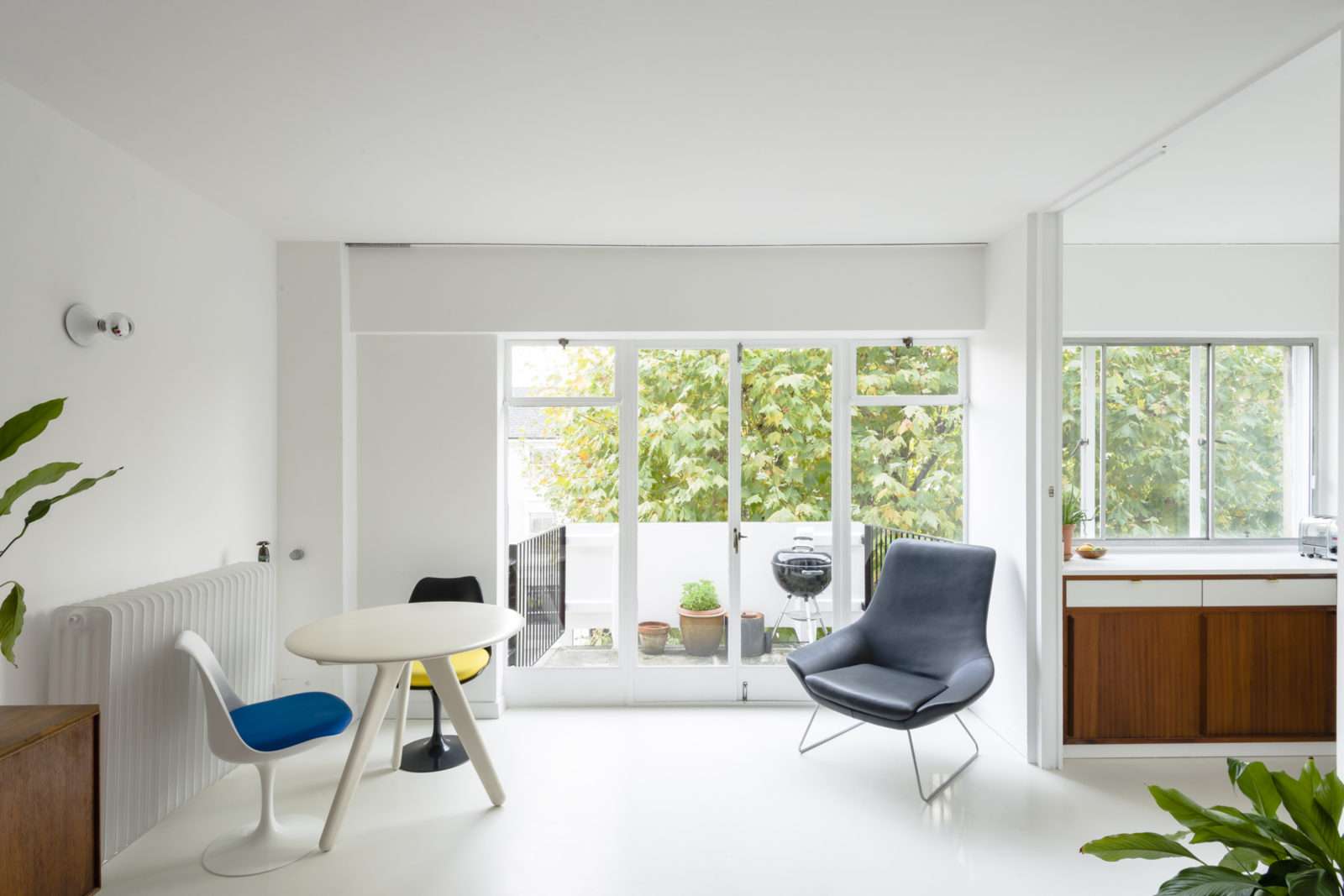
During World War II, Regent’s Park Road – previously a row of gorgeous Georgian homes – was sadly bombed and the damage left a sizable space between townhouses. However, this brought 10 families, better known as the Regent’s Park Housing Society, together to develop a residential building to fill the gap. Employing Goldfinger as their architect, they tasked him with creating a block of flats that would fit their needs and be in his singular style while remainging sensitive to the neighbours. Completed in 1956, this was the architect’s first post-war project and marked a significant shift from the simple lines of 2 Willow Road – where Goldfinger lived – and towards a more brutalist style that would define his later works.
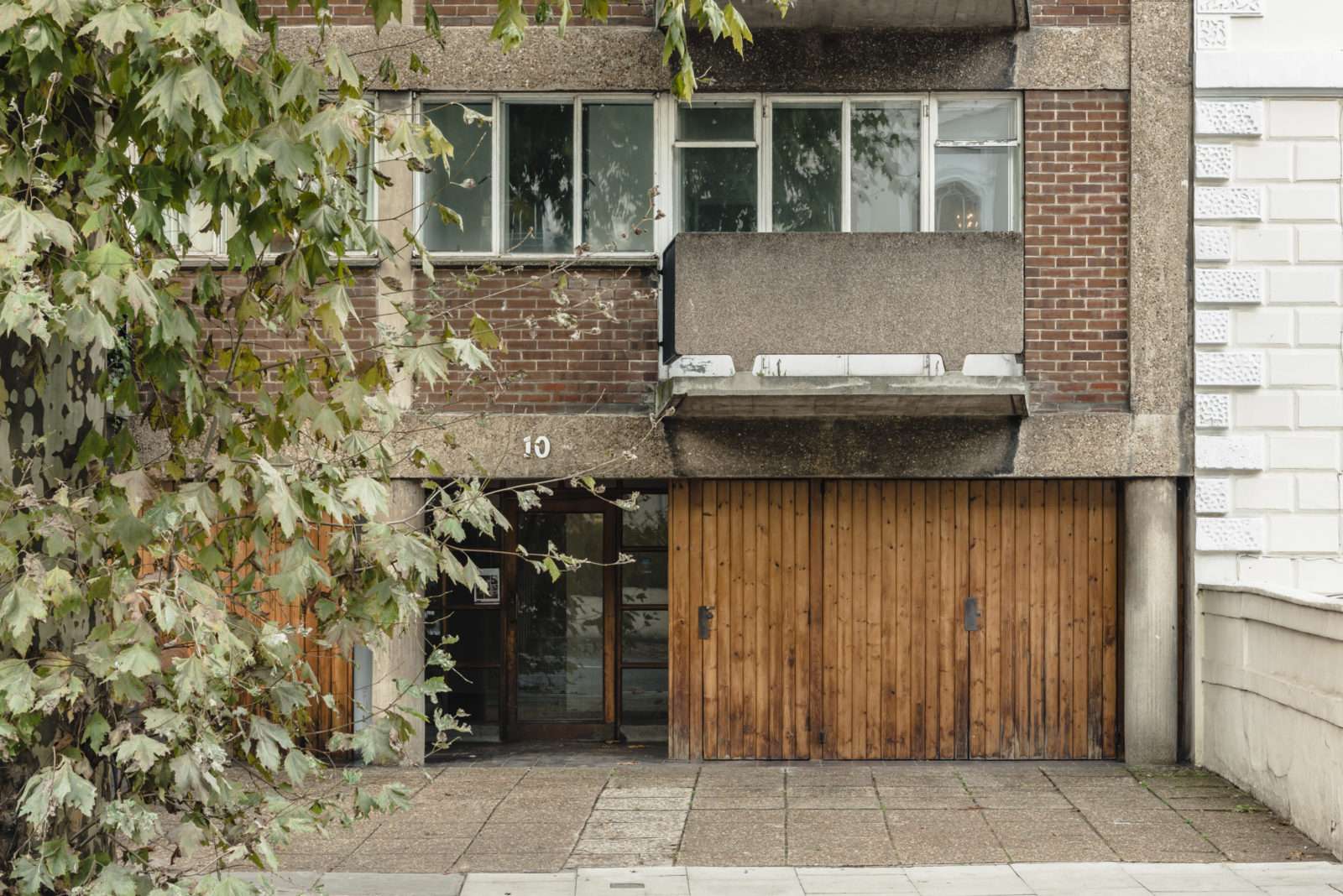
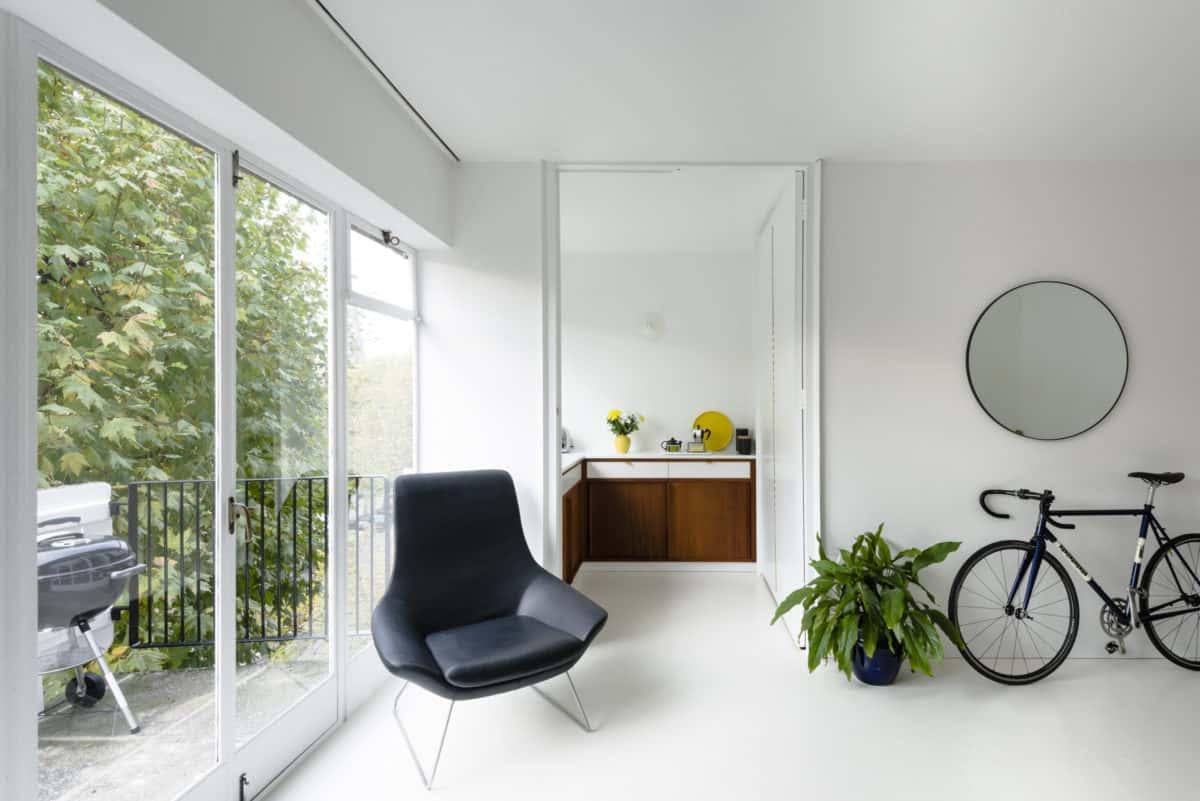
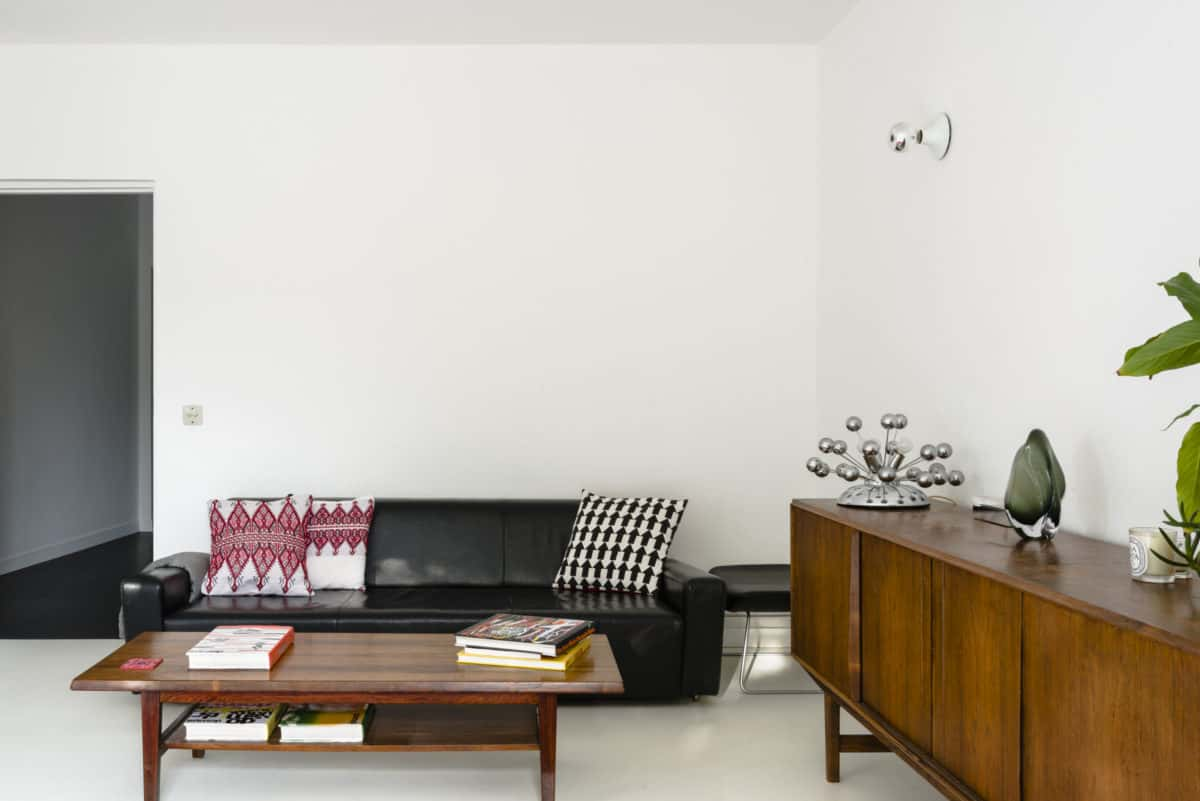
A modernist aesthetic is evident in the façade, which is characterised by red bricks and bold concrete balconies. It’s also apparent in the communal lobby, where an open-tread staircase with a slender steel balustrade has been beautifully preserved and brings plenty of personality to the space. The most charming element, however, might be the 10 mailboxes lined neatly in two rows, representative of the flats within the building – a wonderful reminder of its heritage and the families who pioneered it.
This apartment, which lies on the third floor, has been carefully refurbished to a high standard by its architect owner. The minimalist white-washed walls and resin floors provide a blank canvas for future residents – but if you need a little inspiration, why not look to the current set-up? We love how the collection of mid-century furniture sits within the space. These pieces also speak to the delightful 1950s details that run throughout, such as the exquisite mahogany joinery in the bedroom (the kitchen has since been redesigned to match), and the folding door that divides the kitchen and living space.
Last but certainly not least is the balcony. Where better to catch the sun’s rays than your own south-facing spot? And if you require more outdoor space – say green expanses and rose gardens to wander around – you can rest assured knowing that Regent’s Park and Primrose Hill are only a short walk away.
